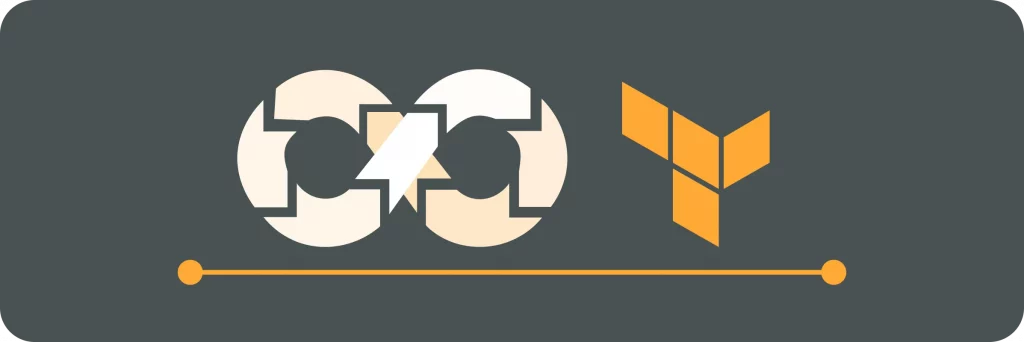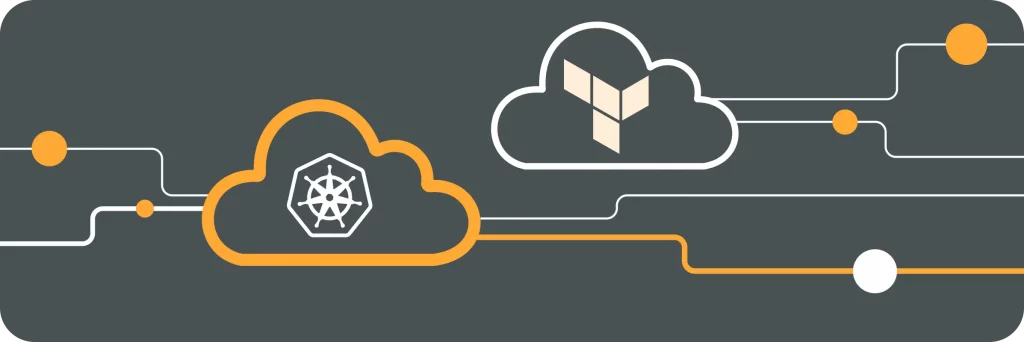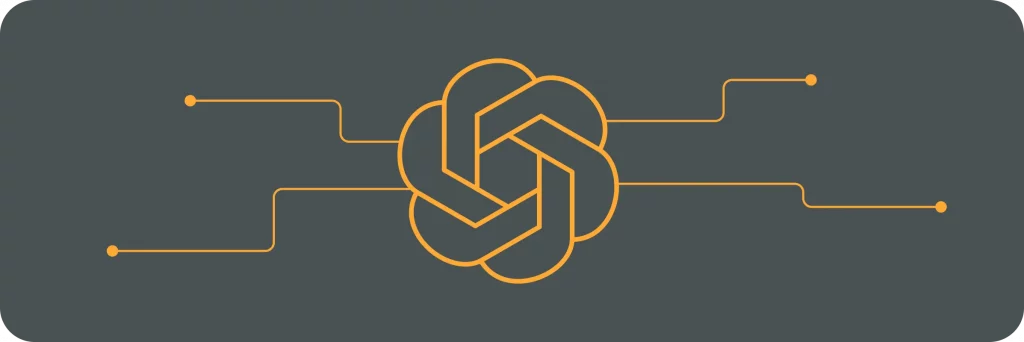In today’s rapidly evolving technological landscape, the synergy between DevOps and cloud security has become increasingly crucial for organizations. By combining these two disciplines, businesses can streamline their software development processes while ensuring the safety and integrity of their cloud infrastructure. In this article, we will explore the fundamentals of DevOps and cloud security, delve into the intersection of both disciplines, discuss key principles, examine the challenges organizations may face, and provide best practices to ensure effective DevOps cloud security implementation.
Understanding DevOps and Cloud Security
Before diving deeper, let’s first establish a clear understanding of DevOps and its significance within the realm of cloud security. DevOps, short for Development and Operations, is an approach that fosters collaboration between software developers, quality assurance engineers, and IT operations teams throughout the software development lifecycle. This collaborative approach breaks down silos and promotes a culture of shared responsibility, where everyone is accountable for the success of the software delivery process.
DevOps emphasizes continuous integration, continuous delivery, and continuous deployment within an agile software development framework. By encouraging cross-functional collaboration and automation, organizations can reduce the time and effort required to release software updates, ultimately improving customer satisfaction and accelerating time-to-market.
But what does this mean for cloud security? Well, the increased speed and frequency of software releases in a DevOps environment can introduce new security challenges. It is crucial for organizations to integrate security practices into their DevOps processes from the very beginning. This includes implementing security controls, conducting regular security assessments, and ensuring that security is a shared responsibility across all teams involved.
The Importance of Cloud Security
With the increasing reliance on cloud infrastructure, ensuring robust cloud security measures is paramount. Organizations must safeguard their valuable data, protect against potential breaches, and comply with regulations to maintain their reputation and credibility.
Cloud security involves numerous aspects, such as access management, data encryption, network security, and vulnerability assessments, all of which must be addressed proactively. Access management ensures that only authorized individuals have access to sensitive data and resources, reducing the risk of unauthorized access or data leakage. Data encryption protects data at rest and in transit, making it unreadable to unauthorized parties. Network security involves implementing firewalls, intrusion detection systems, and other measures to protect the cloud infrastructure from external threats. Vulnerability assessments help identify and address any weaknesses or vulnerabilities in the cloud environment, ensuring that security measures are up to date and effective.
Furthermore, compliance with regulations such as the General Data Protection Regulation (GDPR) and the Health Insurance Portability and Accountability Act (HIPAA) is essential for organizations that handle sensitive data. Failure to comply with these regulations can result in severe penalties and damage to the organization’s reputation.
In conclusion, DevOps and cloud security go hand in hand. By integrating security practices into the DevOps process and implementing robust cloud security measures, organizations can ensure the confidentiality, integrity, and availability of their data in the cloud. This not only protects the organization and its customers but also fosters trust and confidence in the cloud computing environment.
The Intersection of DevOps and Cloud Security
When DevOps and cloud security converge, organizations can leverage the benefits of both methodologies to achieve comprehensive and streamlined software development processes with enhanced security measures. This intersection brings about a unique set of considerations and opportunities that organizations should embrace to maximize their operational efficiency and risk mitigation efforts.
How DevOps Influences Cloud Security
DevOps practices introduce automation and close collaboration, allowing security professionals to work closely with development and operations teams to embed security measures directly into the software development process. Integrating security from the early stages of development mitigates the risk of vulnerabilities and ensures a secure software environment in the cloud.
Furthermore, the adoption of DevOps principles enables organizations to implement continuous security testing and monitoring throughout the software development lifecycle. By automating security checks, organizations can proactively identify and address potential security issues, reducing the likelihood of security breaches and ensuring the integrity of their cloud infrastructure.
The Role of Cloud Security in DevOps
Conversely, cloud security plays a pivotal role in DevOps by ensuring the integrity and confidentiality of the cloud infrastructure. Security protocols, access controls, encryption, and monitoring mechanisms form an integral part of any DevOps strategy, guarding against potential threats and vulnerabilities introduced during development, deployment, and maintenance of applications.
Moreover, cloud security solutions provide organizations with the ability to scale their infrastructure securely. As DevOps teams deploy applications in cloud environments, they can rely on robust security measures to protect their systems and data from unauthorized access or malicious activities. This scalability not only enhances the agility of the organization but also enables them to meet the ever-growing demands of their customers without compromising security.
In addition to securing the cloud infrastructure, cloud security also encompasses identity and access management (IAM) capabilities. With IAM, organizations can enforce granular access controls, ensuring that only authorized individuals have the necessary permissions to access sensitive resources. This level of control minimizes the risk of insider threats and unauthorized access, further strengthening the overall security posture of the organization.
Key Principles of DevOps Cloud Security
To establish effective DevOps cloud security, organizations must adhere to key principles that promote secure practices throughout the software development lifecycle.
Ensuring the security of cloud-based applications and infrastructure is of paramount importance in today’s digital landscape. As organizations increasingly rely on cloud services to host their applications and store sensitive data, it becomes crucial to implement robust security measures that protect against potential threats and vulnerabilities.
Continuous Integration and Continuous Delivery (CI/CD)
Implementing CI/CD pipelines not only expedites software delivery but also enables continuous security testing and assessment. By automating security checks, organizations can identify and mitigate vulnerabilities early in the development process, minimizing potential risks and ensuring a more secure product.
With CI/CD, developers can integrate security testing into their daily workflows, allowing for rapid feedback on potential security issues. This proactive approach empowers development teams to address vulnerabilities promptly, reducing the likelihood of security breaches in production environments.
Infrastructure as Code (IaC)
IaC enables organizations to define and manage their cloud infrastructure through code, facilitating repeatability, consistency, and version control. By codifying security measures and embedding them within the infrastructure deployment scripts, organizations can ensure that security configurations are consistently applied across all development and test environments.
By treating infrastructure as code, organizations can leverage the benefits of version control systems, enabling them to track and manage changes to their infrastructure configurations over time. This not only enhances traceability but also enables teams to roll back to previous versions in case of any security incidents or issues.
Furthermore, IaC allows for the automation of security controls, making it easier to enforce security best practices across the entire infrastructure. By defining security measures as code, organizations can ensure that security configurations are consistently applied, reducing the risk of misconfigurations or human errors that could lead to security vulnerabilities.
Challenges in DevOps Cloud Security
While the integration of DevOps and cloud security offers substantial benefits, organizations should be aware of the potential challenges they may encounter throughout the implementation process.
Identifying Potential Security Risks
Recognizing and understanding potential security risks is crucial for effective risk mitigation. Organizations must carefully assess and monitor their cloud infrastructure, identify vulnerabilities, and establish robust security measures to protect against emerging threats in an ever-changing threat landscape.
Overcoming Security Challenges in DevOps
Organizations must break down silos and foster a culture of collaboration and shared responsibility. Bridging the gap between development, operations, and security teams is essential for effective security integration within the DevOps framework. Regular training and knowledge sharing ensure that all stakeholders are empowered to implement relevant security practices in their respective roles.
One specific challenge that organizations may face in DevOps cloud security is the need for continuous monitoring. With the dynamic nature of cloud environments, it becomes crucial to have real-time visibility into the security posture of the infrastructure. This requires the implementation of automated monitoring tools that can detect and alert on any suspicious activities or vulnerabilities.
Another challenge is the complexity of managing security across multiple cloud service providers. Many organizations adopt a multi-cloud strategy to leverage the unique offerings of different providers. However, this can introduce complexities in terms of security management. Organizations must ensure consistent security controls and policies across all cloud environments, while also considering the specific security features and capabilities of each provider.
Best Practices for DevOps Cloud Security
To achieve optimal DevOps cloud security, organizations can follow these best practices:
Implementing Security in the DevOps Lifecycle
Embedding security checks and assessments throughout the software development lifecycle ensures that potential vulnerabilities are identified and addressed at every stage. By making security everyone’s responsibility, organizations can create a culture of proactive security awareness and compliance.
Ensuring Compliance in Cloud Security
Compliance with industry regulations and standards is essential for maintaining the trust of customers and stakeholders. Organizations should establish robust governance processes, implement role-based access controls, and conduct regular security audits to ensure compliance with applicable regulations and protect sensitive data.
In Conclusion
DevOps and cloud security are no longer separate entities but rather intertwined disciplines that organizations must embrace to thrive in the digital landscape. By understanding the fundamentals, exploring the intersection, adhering to key principles, and addressing challenges through best practices, organizations can effectively implement DevOps cloud security, enabling them to drive innovation while safeguarding their cloud infrastructure.




